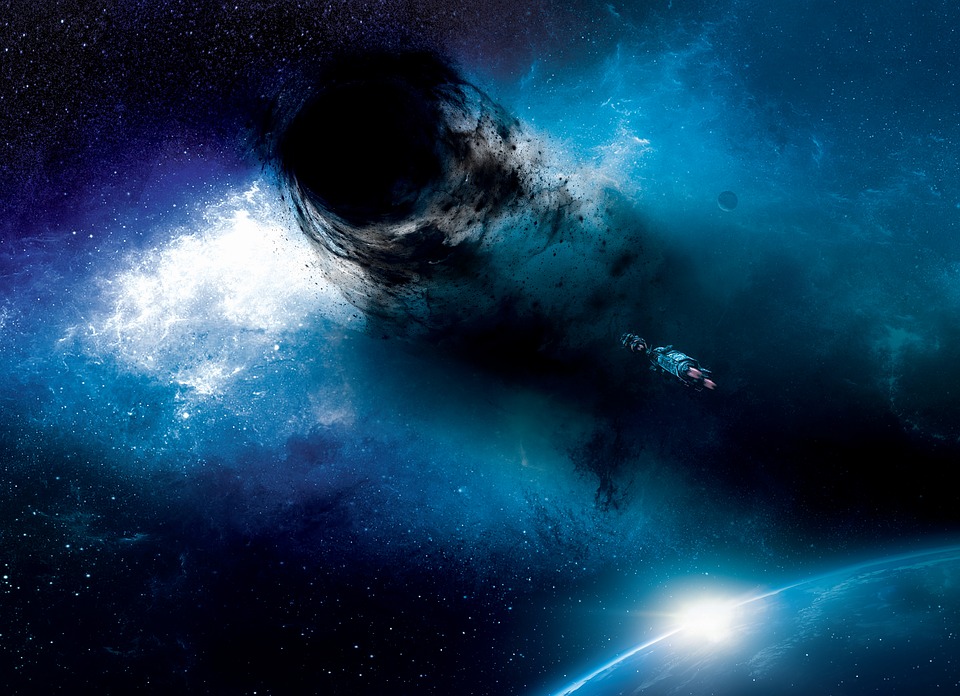Black holes have been a mystery to scientists for a long time, and it has taken just as long to further understand these celestial objects. Recently, the Hubble Space Telescope managed to detect what may be the “missing link” of black holes.
Express reports that the Hubble Space Telescope was looking for a black hole that supposedly had a close encounter with a rogue star. The telescope was looking for the source of a powerful burst of x-rays that were spotted back in 2006 by the Chandra X-Ray Observatory and the European Space Agency’s X-ray Multi-Mirror Mission. The Hubble snapped a photo of its discovery, the source now formally named 3XMM J215022.4-055108, which was found in a star cluster at the edge of another galaxy.
One theory that scientists have is that an intermediate-sized black hole that is present and could be the source of the x-rays.
According to NASA data, the star cluster may have been the core of a small dwarf galaxy that previously strayed a little too close to a larger galaxy that is the host of the star cluster. Due to the gravitational interactions between the two galaxies, it may have destroyed the dwarf galaxy, leaving only the cluster of stars.
At the same time, astronomers also believe that a black hole’s gravitational pull ripped apart a star that got too close, which resulted in the x-ray flare that was spotted back in 2006. In case this theory is proven to be true, then the black hole would be 50,000 times the size of the sun.
Previously, the Hubble telescope also discovered another cosmic phenomenon in the form of a bright pink cloud of gas and dust, which is where stars are born. This bright pink cloud, formally referred to as LHA 120-N 150 is found just along the edges of the tarantula nebula, known to be a place where stars are born, in the Large Magellanic Cloud Galaxy which is 160,000 light-years from Earth.
According to NASA, this cloud is the perfect place “to study the origin of massive stars.” The cloud also happens to contain dozens of isolated giant stars that were formed on its own than being formed in a cluster.



 What’s the shape of the universe? Mathematicians use topology to study the shape of the world and everything in it
What’s the shape of the universe? Mathematicians use topology to study the shape of the world and everything in it  Less than 1% of the world’s biggest radio telescope is complete – but its first image reveals a sky dotted with ancient galaxies
Less than 1% of the world’s biggest radio telescope is complete – but its first image reveals a sky dotted with ancient galaxies  It’s science, not fiction: high-tech drones may soon be fighting bushfires in Australia
It’s science, not fiction: high-tech drones may soon be fighting bushfires in Australia  FDA Vaccine Chief Peter Marks Resigns Amid Controversy Over Transparency
FDA Vaccine Chief Peter Marks Resigns Amid Controversy Over Transparency  Despite fears of falling trust in expert knowledge, a global survey shows New Zealanders value science highly
Despite fears of falling trust in expert knowledge, a global survey shows New Zealanders value science highly  Earth is bombarded with rocks from space – but who gets to keep these ultimate antiques?
Earth is bombarded with rocks from space – but who gets to keep these ultimate antiques?  A new study reveals the structure of violent winds 1,300 light years away
A new study reveals the structure of violent winds 1,300 light years away  Kennedy Sets September Deadline to Uncover Autism Causes Amid Controversy
Kennedy Sets September Deadline to Uncover Autism Causes Amid Controversy  Scientific misconduct is on the rise. But what exactly is it?
Scientific misconduct is on the rise. But what exactly is it?  One of the largest searches for alien life started 30 years ago. Its legacy lives on today
One of the largest searches for alien life started 30 years ago. Its legacy lives on today  AstraZeneca’s Imfinzi Gets US Approval for Bladder Cancer Treatment
AstraZeneca’s Imfinzi Gets US Approval for Bladder Cancer Treatment  Astronauts on NASA’s Artemis mission to the Moon will need better boots − here’s why
Astronauts on NASA’s Artemis mission to the Moon will need better boots − here’s why  What was the first thing scientists discovered? A historian makes the case for Babylonian astronomy
What was the first thing scientists discovered? A historian makes the case for Babylonian astronomy  Asteroid has a very small chance of hitting Earth in 2032, but a collision could devastate a city
Asteroid has a very small chance of hitting Earth in 2032, but a collision could devastate a city  What are the chances an asteroid will impact Earth in 2032?
What are the chances an asteroid will impact Earth in 2032? 



























